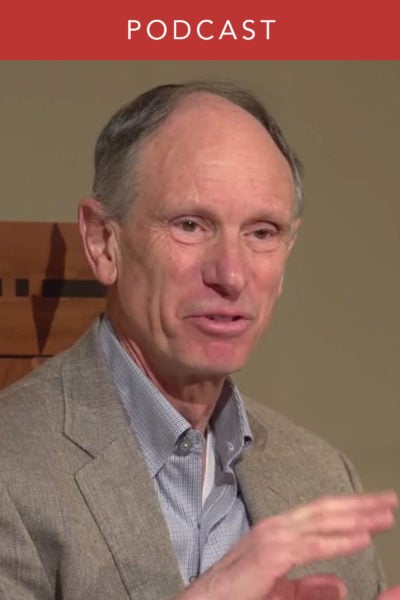Find a quiet, comfortable place to sit and follow along with the guided meditation.
-
-
Here, Alan Wallace comments on the Dzogchen understanding of the substrate consciousness and how to relate to appearances. Follow along with the text starting on page 149 in the PDF of the root text (found in Lesson 1) or in your copy of Heart of the Great Perfection, or in the excerpt below.
With those words she dissolved, together with the mirror, into my heart, and my body, speech, and mind were filled with joy and bliss. Those [words] were my rationale, so once again I ardently meditated on luminosity and cognizance. Consequently, at times it seemed as if that which appeared and that which was aware nondually dispersed outward [476] and then converged inward again. On other occasions, that which appeared and that which was aware were nondually and spontaneously objectified and then naturally disappeared. At other times appearances and awareness were nondually self-emergent and self-dissolving, such that I understood that they were not projected out from within the body. I knew that these experiences were attributable to grasping at the ground of being as an object. (more…)
-
Find a comfortable, quiet place to sit and follow along with this guided meditation.
-
Alan Wallace discusses how Dzogchen helps us view reality from the perspective of pristine awareness. Follow along as he reads from the text in the excerpt below, or starting on page 147 in the PDF of root text found in lesson 1 or your copy of Heart of the Great Perfection.
Now you must diligently investigate the origin from which this mind first arose, the location where it abides in the interim, and the destination to which it finally goes. Meditation is just that!” Then he seemed to dissolve into me.
On another night in a dream, a red yogin claiming to be Orgyen Speech Vajra said, “Son, focus your mind firmly on me. Forcefully cut off all thoughts.” As a result of doing this, thoughts flowed forth uninterruptedly, so I told him my mind wasn’t capable. (more…)
-
In this supplementary reading from The Attention Revolution, we can address some common issues in shamatha meditation that will help us develop the ability to be more focused.
-
In this lesson, Alan Wallace explores meditation more in depth, going into topics such as awareness, movement, and stillness, and covering some of the challenges meditators may face. You can follow along with the text he comments from in the excerpt below, on page 146 of the PDF of the root text found in lesson 1, or in your copy of Heart of the Great Perfection: Dudjom Lingpa’s Visions of the Great Perfection, Vol. 1.
That which observes is called mindfulness, or awareness, that which is observed is called movement, and resting in that state is called stillness. Identify them as such and meditate! If you meditate earnestly, stable meditative experiences of the bliss, luminosity, and nonconceptuality of śamatha will arise in your mindstream. Consequently, when stillness, movement, and awareness merge into one and all discursive thoughts are self-knowing and self-illuminating, meditate by identifying this as awareness. And when thoughts automatically scatter in all directions, meditate by identifying this as the mind of unawareness. By doing so, in accordance with the degree of sharpness of your faculties, various meditative experiences such as bliss, luminosity, vacuity, stillness, and harshness will certainly occur. Just as it has always been in the moon’s nature to wax and wane, so it is in the mind’s nature to be periodically happy and sad. So without hope or fear, rejection or acceptance, negation or affirmation, do not lose your own grounding in that very luminosity and cognizance. [472] This is a crucial point. Meditative experiences and appearances disappear by themselves, fading away, unable to sustain themselves, like illusions and dreams, so recognize this. If you cherish, refute or affirm, hope or fear, or become attached to or fixate on experiences such as bliss, luminosity, vacuity, harshness, dreams, or subtle extrasensory perception, this will lead you toward errors and obscurations, so recognize this. (more…)
-
Find a comfortable, quiet seat and follow along to the guided meditation.



